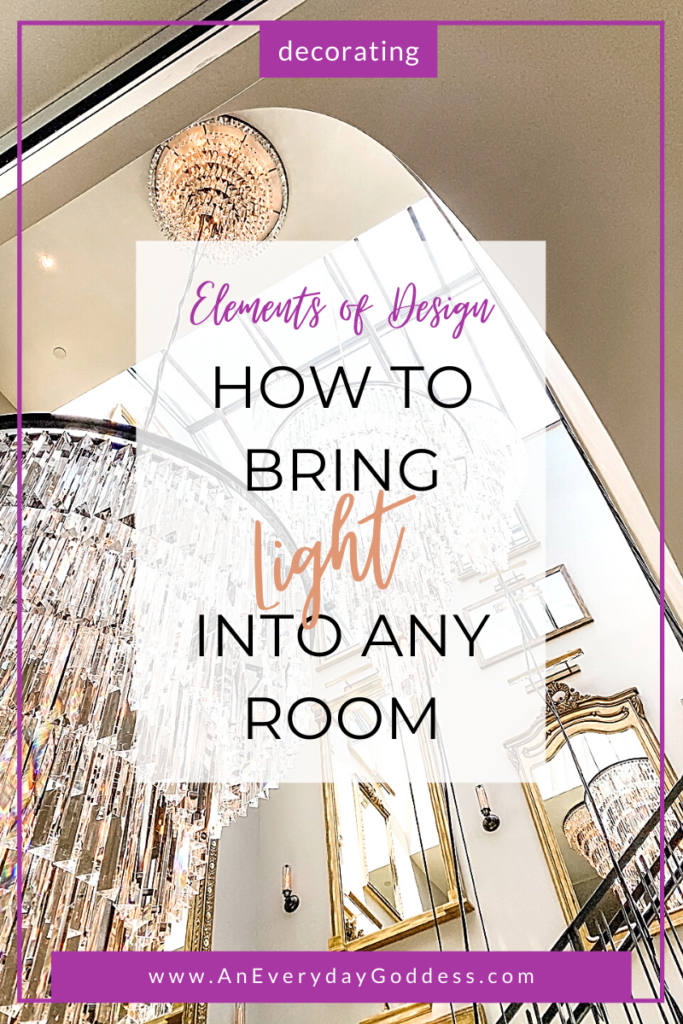
Light is one of the essential elements of design, and many designers consider it the most important element because it affects the appearance of all other elements of a room’s design. Both natural and artificial light can sculpt a room or highlight its shape, while a lack of light can make a room frustratingly unusable. Lighting can multiply the functions of a room, and help create zones.
For home decorators, light is one of the most overlooked aspects of a room’s design plan. But with a little lighting know-how, you can easily add light to your next decorating project!
Lighting breaks down into three basic types: general, task and accent. Most of the rooms we live in, including the kitchen, living room, bedroom, bathroom and home office, can benefit from all three types of lighting.
General
General lighting (also called ambient lighting) helps a person move around the room. It provides a wide swath of light, lighting the entire space. Every room needs some kind of general lighting. Recessed can lights and ceiling mounted fixtures, including lighted ceiling fans and chandeliers, fit into this category, as well as table lamps and floor lamps.
In a bathroom, a vanity light over the sink would qualify as general lighting.
During the day, windows, skylights and solar tubes provide general light, typically without the need for artificial light sources.
Task
Task lighting shines a more focused beam of light onto a surface where some type of task is being performed. An example in a kitchen would be an under-cabinet light that illuminates a cutting board, or that spotlight directly over the kitchen sink found in many older homes. In a family room, a light for a puzzle table or a reading nook would be task lighting, as is a desk lamp in an office.
Accent
Accent lighting catches your eye. It’s the most precise and targeted lighting, drawing attention to a particular feature or object in a room. Think about the light over a painting, a spotlight over a fireplace mantle, or an up-light on a tree. A fire in a fireplace and candles can fall into this category as well, as “mood lighting.”
Another aspect of lighting to consider is how to manipulate and maximize the light that you have. Consider these bright ideas:
- Use the maximum allowable wattage bulb for the fixture.
- Look for fixtures with light-colored shades, or no shades at all.
- Convert a recessed can light into an accent pendant with a conversion kit like these.
- Incorporate reflective surfaces like mirrors, brass, crystal and glass to bounce around available light. The Hall of Mirrors at the Palace of Versailles does this brilliantly.
- Paint the ceiling white (or a metallic!) to reflect as much light as possible.
- Dimmers can control the amount of light output by a fixture, and are especially helpful in a dining room to help set a mood.
- Use timers to automatically turn on table lamps in the evening hours to provide general lighting, and a warm welcome when you return home.
Look around your home. Can you see examples of the three types of light: general, task, and accent? Are there any rooms that is missing one, and would benefit from a little more light? Where are the shadowy places? Are there any rooms you don’t use at night simply because there’s not enough light? Use your newfound lighting know-how and make a plan to add some light to your life!


 Hi! I’m Deanne Marie – designer, author, attorney, travel enthusiast and everyday goddess. I love showing other single professional women how to create a home that is as comfortable as it is stylish, and have joy-filled, everyday goddess kind of life.
Hi! I’m Deanne Marie – designer, author, attorney, travel enthusiast and everyday goddess. I love showing other single professional women how to create a home that is as comfortable as it is stylish, and have joy-filled, everyday goddess kind of life.
